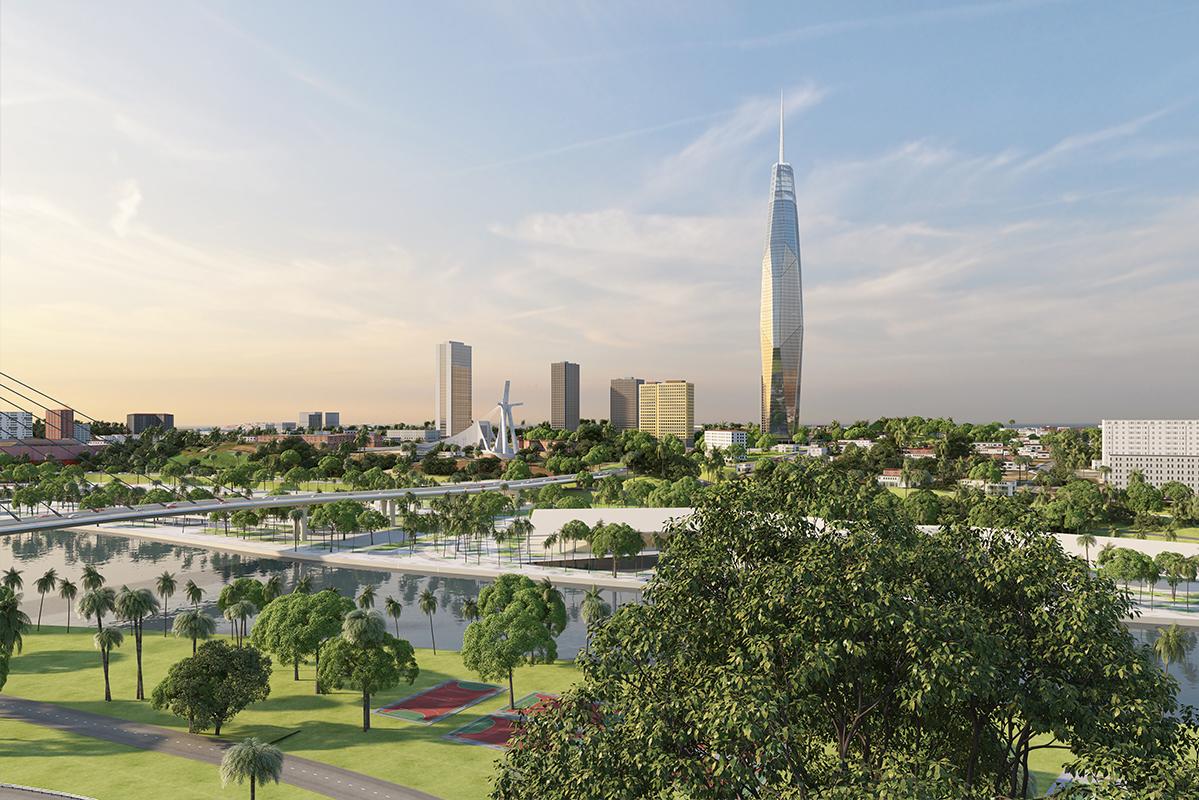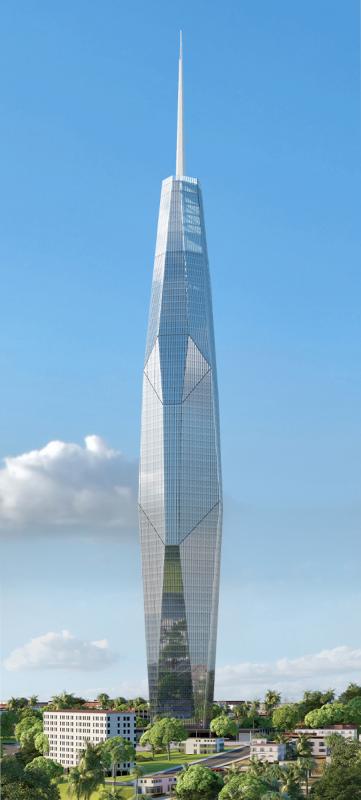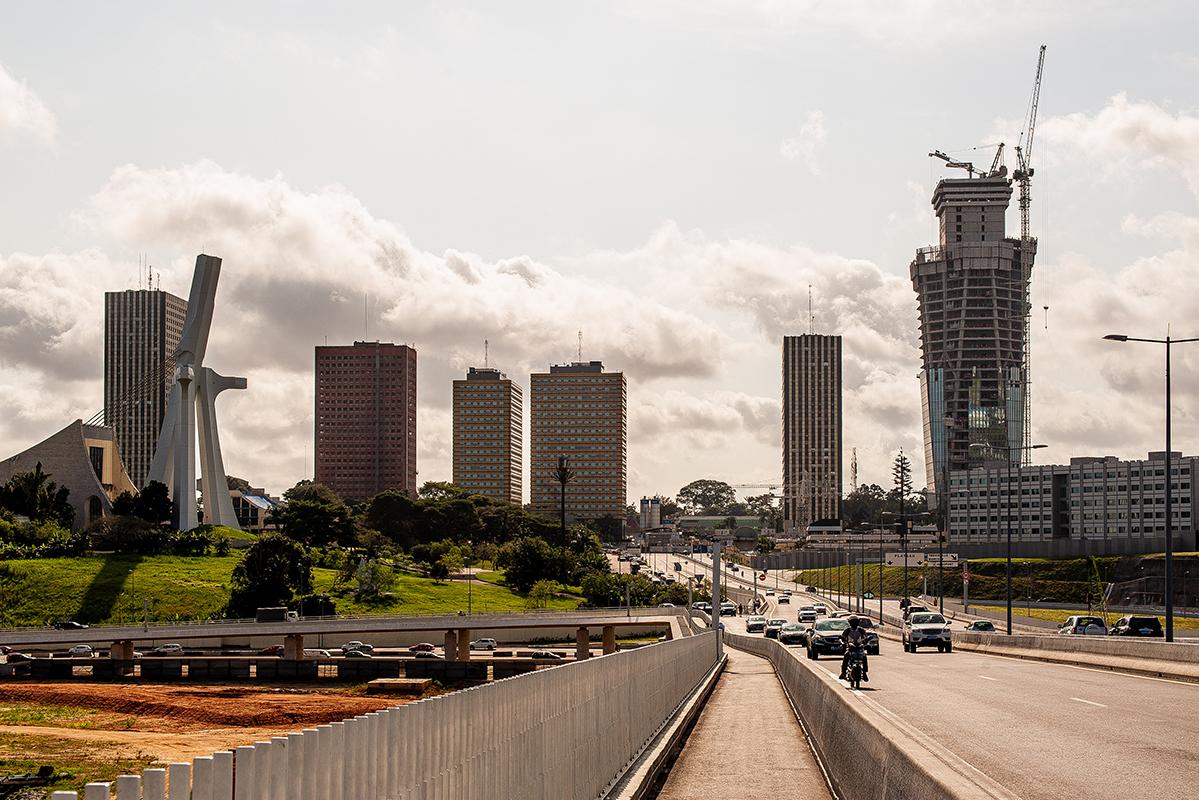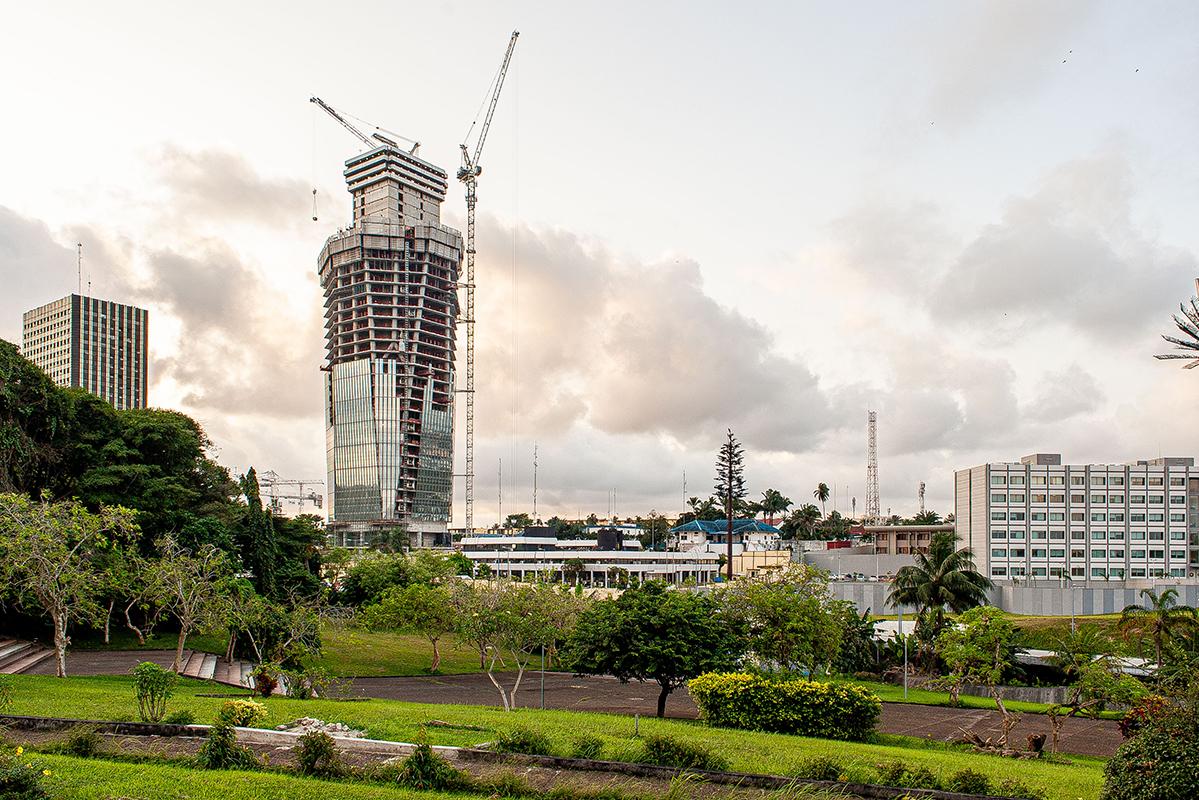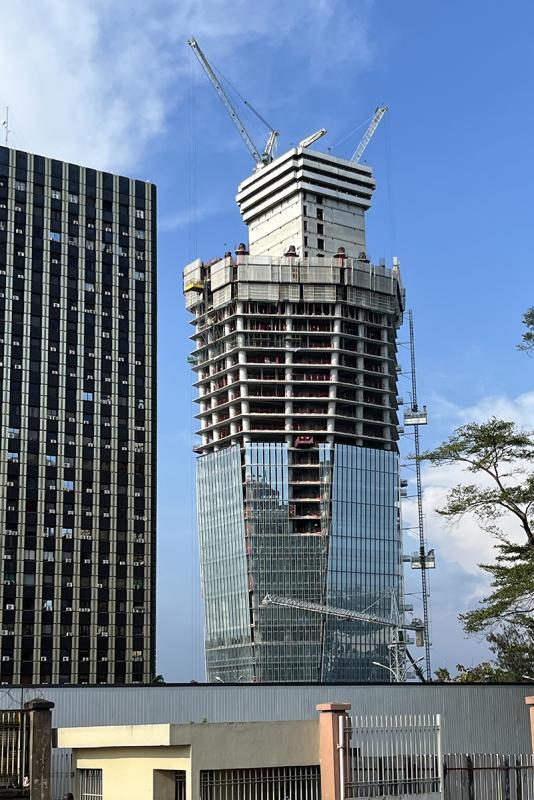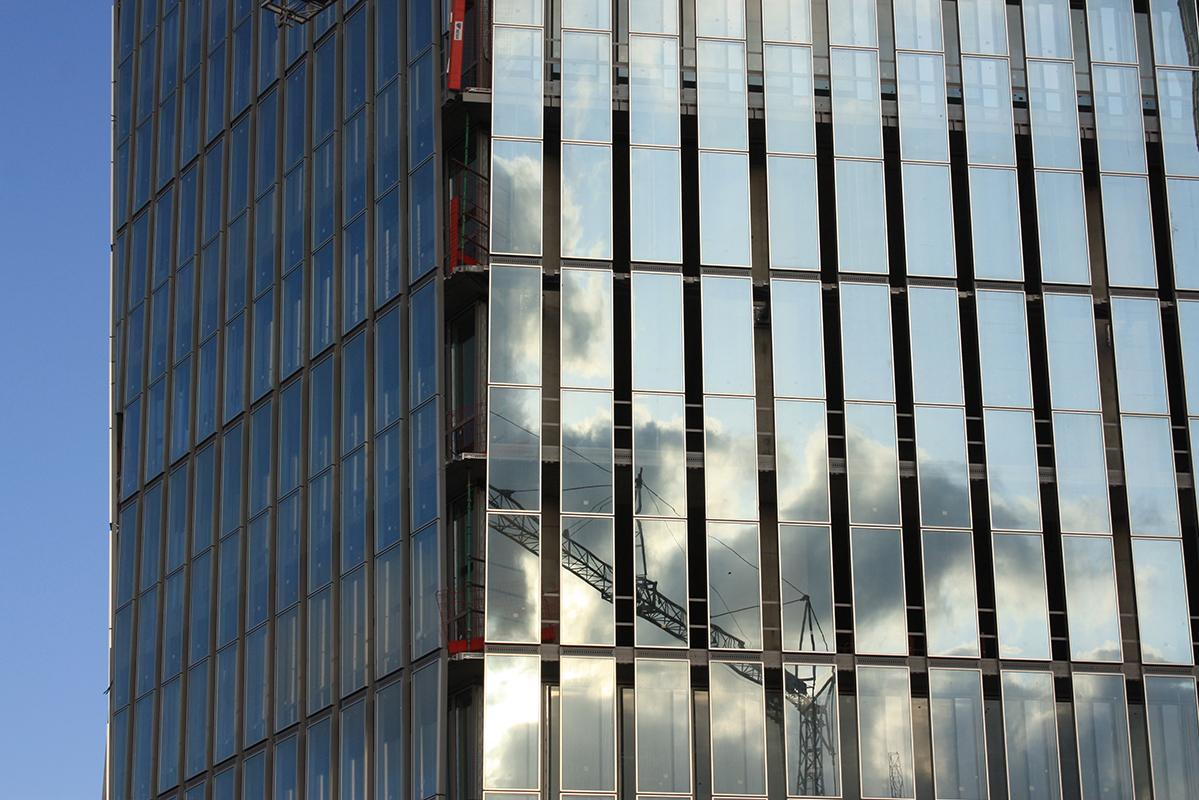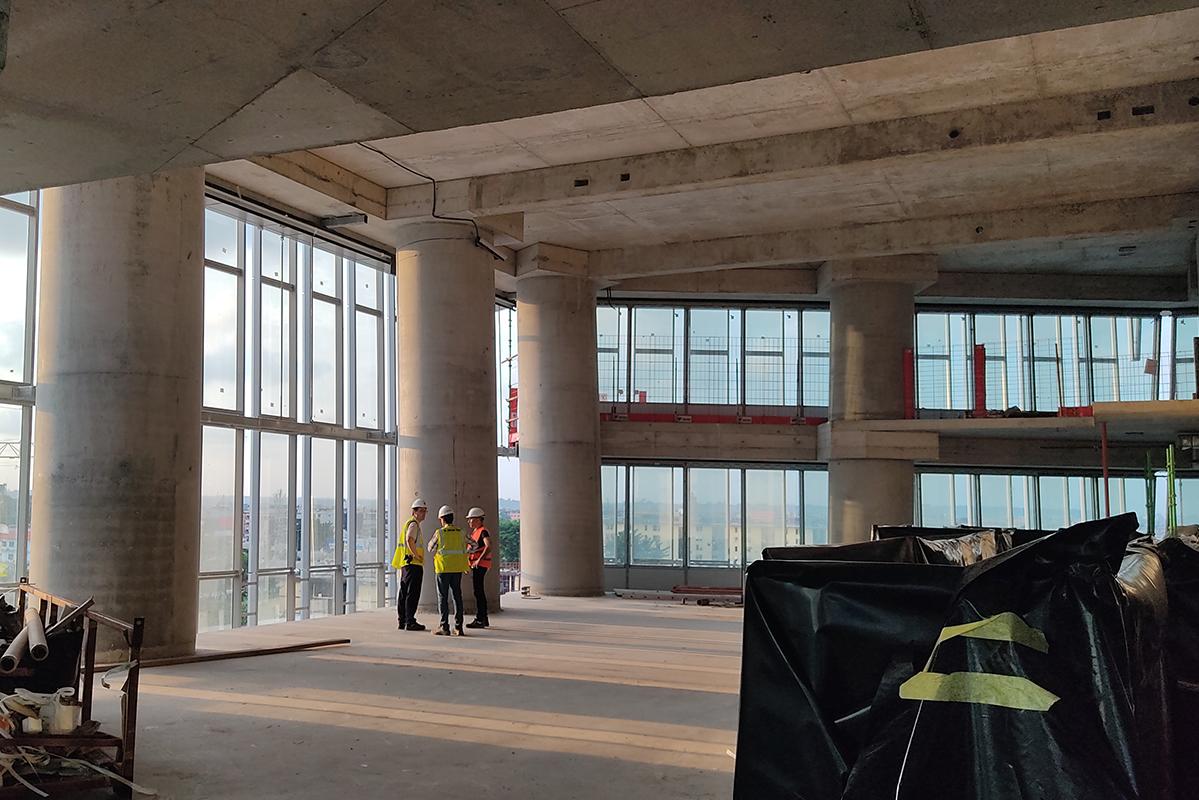Tour F
Construction of a supertall building in Abidjan
The project involves the construction of a tower near 300 meters for office use, initiated by the Ivorian Ministry of Construction, Housing, and Urbanism. Located in the Plateau district, the administrative zone at the heart of the economic capital of Ivory Coast, this new tower is built on the site of the Administrative City, which already houses several high-rise buildings. the Tour F, 64 floors, will conclude the extensive modernization program of the Administrative City launched in the late 70s with Towers A, B, C, D, and E. The project's goal is to offer an iconic and innovative architectural structure in the city center, which will be one of the tallest towers in Africa, complementing the dynamism of Abidjan.
The tower is designed as a tall volume sculpted into facets with surfaces inclined inward toward the ground or sky. The top of the tower is horizontally truncated and is topped with a glass crown formed by the extension of the glass facade into the sky. The building is symmetrical along an East-West axis, and from certain angles, the play of facets allows the tower to be seen as a stylized African mask. At ground level, the base of the tower is surrounded by a simple rectangular podium that houses a large entrance hall and various services, while the floors are polygons with varying dimensions on each floor. The podium's roof extends into a wide overhang to shelter occupants and visitors.
The facade is treated as a double skin and includes an inner facade that provides weather protection with double glazing incorporating a layer of sun and thermal protection. The inner facade is fully glazed with standard mullion spacing every 1.35 meters and equipped with interior blinds. An opaque enamel glass panel with a reflective layer dresses the edge beam at each floor and fulfills the fire protection function of the concrete walkways separating each floor. The outer skin consists of glazed modules overlapping each other, forming long vertical bands of reflective glass that enhance the tower's height. Between each of these bands, a 350mm gap, left empty, creates a pattern on the facade. These bands are interrupted every 2 levels by a horizontal hollow joint made of perforated metal. On intermediate levels, the concrete walkway is concealed by the same perforated metal placed this time set back behind the glass bands. This design visually erases every other floor and alters the perception of the tower's scale.
The treatment of the glass and the finishes of the aluminum profiles have been carefully studied to achieve a specific reflection rate, a true signature of the project. The framing of the external glass is treated with brushed natural anodized finish, while the interior profiles are thermolacquered. This composition allows the facade, beyond its volumetrics, to have a distinct appearance, far from the traditional look associated with towers, with the expression of an orthogonal facade grid and a universal scale.
A walkway space is provided between the two skins to allow maintenance at each floor and contributes to preventing the spread of fire between floors in accordance with French fire regulations. At the top of the tower, the double-skin facade extends above the roof level and forms a large open glass volume with a panoramic view of the city. This envelope is in continuity with the external facade of the rest of the tower and replicates its composition to complete the tower's composition.

